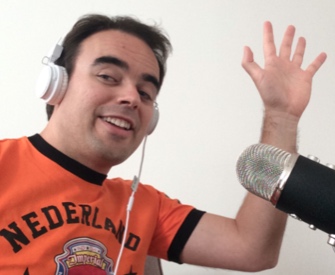How is it do you travel by public transport in the Netherlands?
CLICK HERE to subscribe to my Youtube channel
If you arrive in the Netherlands one thing is certain: you will need to get from point A to B. And like almost all your fellow tourists and visitors you are going to use the Dutch public transport system.
You might be used to getting around in your own car. In the Netherlands it is slightly different, particularly in the Randstad (where the big cities are) people commute by bike or use public transport. The car is still used a lot, but you will see that as a tourist or visitor or someone who has moved here, these two options are far easier.
So how is it do you travel by public transport in the Netherlands?
Let’s start by clearing up some vocabulary:
NS, OV, 9292 and the OV chipcard.
There are a few abbreviations that pop up when you look into public transport in the Netherlands.
The first is OV, which means Openbaar Vervoer (public transport).
Besides this there is the NS. This means Nationale Spoorwegen (National Rail). If you talk about taking the train, nationally and internationally, you can search using this word.
9292 is an app that is used a lot in relation to finding your way around. More about this later.
The OV-chipkaart is the ticket for public transport in the Netherlands. With an OV-chipkaart in your pocket you don’t have to think about strip tickets, metro or train tickets anymore. There’s just one ticket for the train, tram, bus and metro.
There are foreigners who come to the Netherlands who love it. Others hate it. Let’s start with the last group.
Dutch public transport and foreigners: ‘It’a PAIN!’ 🙁
The main thing that is difficult for new users is setting it up.
You have to buy a card and you must add a certain amount of money.
In this process there are some tricky points. Like adding money on a card, which is almost only possible by using a ‘pin card’. The Dutch aren’t the biggest fans of or users of credit cards. The main thing that is used is a ‘pin card’. This is a debit card (maestro).
And then the next bump in the road is checking in and out at the right points.
Remembering to check out is something that you have to get used to.
I remember in the early days of the card, I was sitting on the train and getting really nervous because I couldn’t remember if I had checked in or not.
And the fine you get for not paying is not small. The fine for undeclared use of public transport is €50, in addition to the cost of a (train) ticket. This fine is the same for all forms of public transport: bus, tram, metro and train.
Nowadays the check in/check out points are pretty visible and it’s more difficult to forget.
Dutch public transport and foreigners: ‘It’s really good’ 🙂
So some foreigners have difficulties with the system. But for the most part the students and foreigners coming to the Netherlands appreciate the system.
They say it’s easy; it works for a lot of systems. You just have to get the hang of it.
The Dutch and public transport
That’s about the OV chip card. What is it like to travel by public transport in the Netherlands? Something really Dutch to start with is the cost, so let’s see.
The Dutch and public transport: It is expensive
The Netherlands has the most expensive public transport in the whole of the European Union. A trip by bus, tram or train is, on average, 35% more expensive in our country than in other European countries. This is shown by the figures from the Eurostat statistics office. (1)
The Dutch and public transport: It’s well organised
According to this research, the quality of Dutch public transport is better than in many other countries. NS always scores quite well in international comparisons.
There are a lot of trains for a small country
The Netherlands has the busiest tracks in Europe. On average, Dutch trains arrive on time more often than trains in other European countries and there are relatively few failures on our tracks.
Compared to other countries, the Dutch tracks are used most intensively. And this is increasing further, for example there are more ten-minute trains coming like the one between Amsterdam-Utrecht-Eindhoven. The Dutch take a lot of public transport.
The number of passengers on the Dutch railways is increasing. The stations on which NS operates receive 2.6 times as many passengers a day as the average.
The Dutch opinion on public transport: We like to complain
Most common complaint of the Dutch:
- Full trains.
Nothing is worse than that in the morning.
The train from Utrecht to Amsterdam is notorious for being crowded. Just like the one from Amsterdam to Eindhoven which now goes 6 times an hour!
- Vertraging (delay)
This used to be the most common complaint, but, in recent years, the Dutch are happier. Also because the trains are arriving more and more on time.
- The weather has a bad influence.
Autumn and winter are notorious as seasons with delays. The complaint is that one fall of snow or one leaf shuts down the whole train track in the Netherlands.
Improvements
Stations have been tremendously refurbished in recent years. You may be familiar with the new stations at Rotterdam, Utrecht, Amsterdam and Eindhoven. Beautiful, large buildings with lots of shops to visit to buy something while waiting.
Great apps
To get from point A to point B, there are a couple of great apps. The main one is 9292.nl. For trains ns.nl is in common use.
Google maps nowadays will do, too.
Vocabulary
- het vliegveld (the airport)
- het kaartje (the ticket)
- de automaat (the machine)
- de metro (the subway)
- de tram (the tram)
- de OV-chipkaart (the public transport chipcard)
- het saldo (the balance)
- opwaarderen (to load credit)
- inchecken (to check in)
- uitchecken (to check out)
- de reis (the journey)
- het perron (the platform)
- het spoor (the track)
- de Intercity (the intercity)
(1) https://www.rtlnieuws.nl/nieuws/nederland/artikel/4533651/openbaar-vervoer-nederland-duurste-van-eu-dit-waarom

Bart de Pau
online Dutch teacher & founder of the Dutch Summer School & Dutch Winter School


